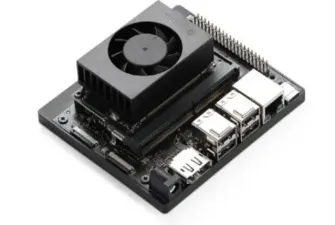Wireless IoT sensors are playing a critical role in reshaping industrial automation, driving advancements in accuracy, efficiency, and productivity. By integrating these sensors into factory machinery and automation systems, industries are now capable of real-time data collection, remote monitoring, and seamless communication between machines and systems. According to a report by Consegic Business Intelligence, the Wireless IoT Sensors Market is projected to reach over USD 70.36 billion by 2031, growing from USD 8.23 billion in 2022 at a CAGR of 27.30% from 2023 to 2031. This transformation towards higher device networking is revolutionizing industries, enabling predictive maintenance, process optimization, and enhanced operational safety.
Real-Time Monitoring and Data Collection
One of the most significant benefits of wireless IoT sensors in industrial automation is their ability to collect and transmit data in real time. These sensors, integrated with machinery, monitor key metrics such as temperature, pressure, vibration, and humidity. Continuous real-time monitoring enables operators to detect irregularities and inefficiencies early on, helping prevent potential failures and costly downtimes. For sectors like manufacturing, energy, and logistics, the ability to access precise, up-to-the-minute data is vital for optimal performance.
By enabling remote supervision, wireless IoT sensors reduce the need for manual inspections, boosting operational efficiency and minimizing the risk of human error. Additionally, the data collected can inform data-driven decisions, leading to better productivity and improved operational outcomes.
Enabling Predictive Maintenance
Traditionally, maintenance in industrial systems was reactive, with equipment being serviced only after failures occurred. However, the introduction of wireless IoT sensors has ushered in a shift towards predictive maintenance. These sensors continuously monitor the health of machinery, detecting early signs of wear and informing maintenance personnel when repairs are needed.
This proactive approach helps prevent unplanned downtimes, extends equipment lifespans, and reduces maintenance costs. Predictive maintenance is especially crucial in industries like aerospace, oil and gas, and automotive manufacturing, where equipment failure can result in substantial financial losses and safety hazards. Wireless IoT sensors, therefore, play an essential role in optimizing resource use and controlling capital expenditures.
Wireless Flexibility and Scalability
Unlike traditional wired systems, wireless IoT sensors offer unparalleled flexibility and scalability. They can be easily deployed in hard-to-reach or hazardous locations where wiring would be impractical or unsafe. This makes them especially valuable in industries such as mining, oil exploration, and remote manufacturing, where physical infrastructure can be challenging to maintain.
Wireless sensors also support scalable solutions, allowing industries to add or reconfigure sensors without the need for extensive retrofitting. As new technologies are integrated into existing systems, these sensors help standardize operations while providing monitoring capabilities for new equipment or environments. This flexibility ensures that industries can expand and adapt their systems efficiently without incurring significant additional costs.
Enhanced Process Optimization
Wireless IoT sensors serve as the foundation for industrial process optimization by providing real-time data on machine performance and environmental conditions. The data collected from these sensors can be analyzed using advanced analytics platforms and machine learning algorithms to identify inefficiencies, optimize production schedules, and suggest improvements.
For example, IoT sensors might reveal that certain machinery operates more efficiently under specific environmental conditions, such as optimal temperature and humidity levels. By adjusting operational parameters based on this data, industries can significantly improve energy efficiency. This is particularly important in sectors like food processing, chemicals, and pharmaceuticals, where maintaining the right environmental conditions is critical for product quality and safety. Wireless IoT sensors continuously monitor these conditions and can automatically trigger adjustments to ensure compliance with industry standards.
Conclusion: Wireless IoT Sensors – The Backbone of Smart Industrial Transformation
Wireless IoT sensors have become an essential element in industrial automation, offering real-time monitoring, predictive maintenance, and enhanced operational optimization. Their flexibility and scalability allow industries to seamlessly integrate them into existing operations, improving safety, reducing downtimes, and boosting efficiency. As industrial connectivity continues to evolve, wireless IoT sensors will remain at the forefront of smart industrial transformation, making operations more intelligent, efficient, and secure.

